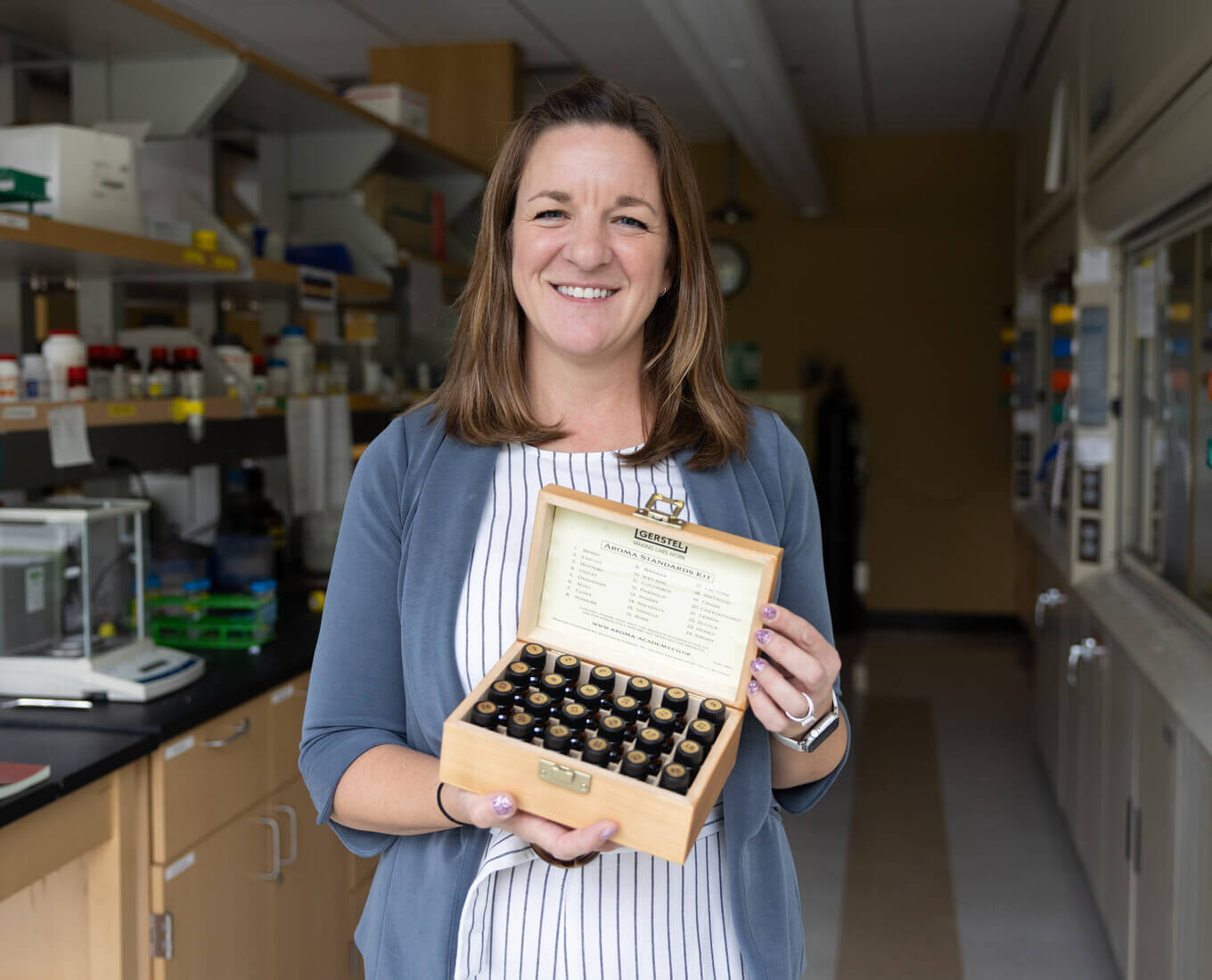and the Edward A. O"Rorke Professor in Liberal Arts, has been awarded a sub-award from the National Institutes of Health via the University of Akron for a total of $108,858.
The grant will help fund the project, titled “New Methods for the Modification of Peptides and Proteins with the Re(CO)3 Moiety,” which has been ongoing for 12 years.
“For this grant, we are proposing to make new compounds of peptides or proteins (small and large polymers of amino acids) attached to rhenium,” Herrick explains. “We hope to make rhenium compounds that have a biological part that target and bind to a tumor and a rhenium part that will emit radiation that will kill the tumor. In addition, rhenium is closely related to an even more rare element, technetium. Technetium, unlike rhenium, is always radioactive.”
This research has potentially exciting implications for the future of tumor diagnosis and therapy.
“New compounds that we might make could lead clinicians to new technetium radiopharmaceuticals for tumor diagnosis and to new rhenium radiopharmaceuticals for tumor therapy. This is part of the modern push to find theranostic agents — compounds that both diagnose and provide therapy for diseases including cancer.”
While the Holy Cross portion of the grant is a sub-award, with the principle awardee being the University of Akron, the research being funded originally began at Holy Cross. According to Herrick, the work was so successful that collaborators at the University of Akron were sought after in order to speed up the pace of the research.
Herrick has had 30 peer-reviewed papers on this project published in journals, including Dalton Transactions, Inorganic Chemistry, Chemical Communications, European Journal of Inorganic Chemistry and Journal of Organometallic Chemistry. Additionally, 34 Holy Cross students have appeared as co-authors on these papers.
At Holy Cross, students have been heavily involved in this research, doing nearly all of the laboratory work, and will continue their involvement through this grant. Beyond supporting the research, the grant’s secondary purpose is to teach students laboratory skills, how to do research, and how to understand and use new scientific ideas both during the school year and over the summer as part of the Holy Cross summer science research program.
The National Institutes of Health (NIH), a part of the U.S. Department of Health and Human Services, is the largest biomedical research agency in the world.
Chemistry Professor Receives $108k Sub-Award from the National Institutes of Health
Read Time
2 Minutes

